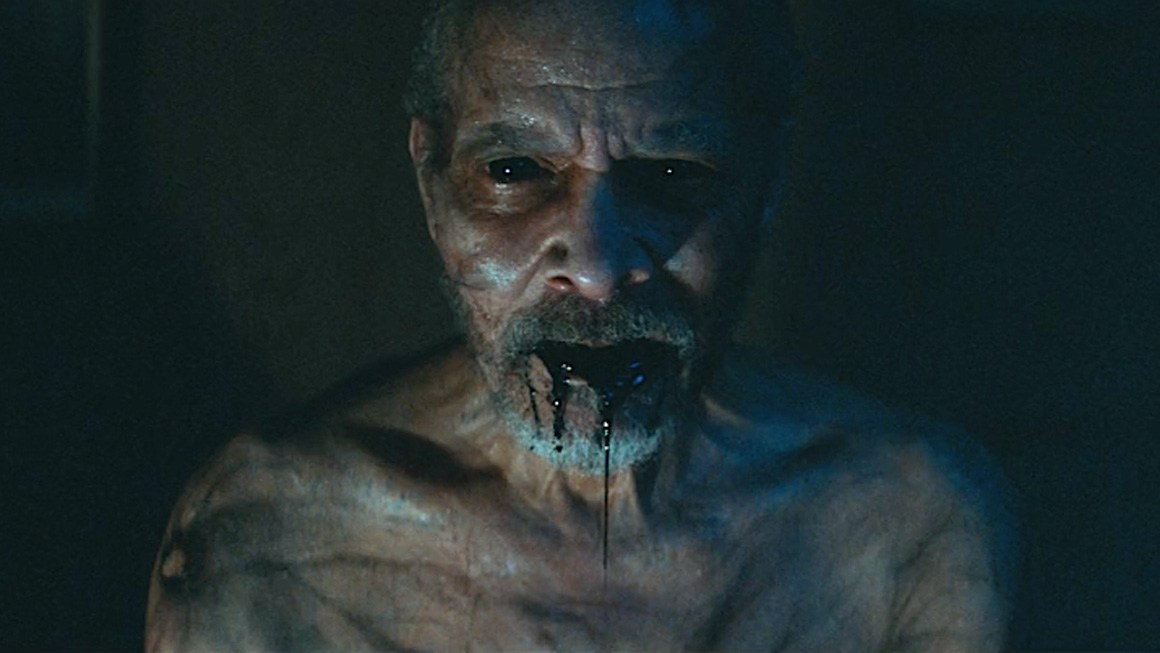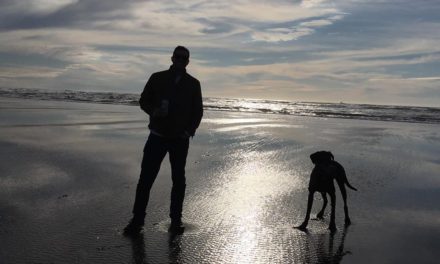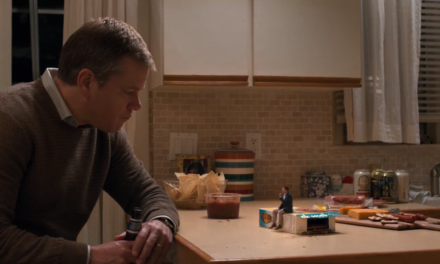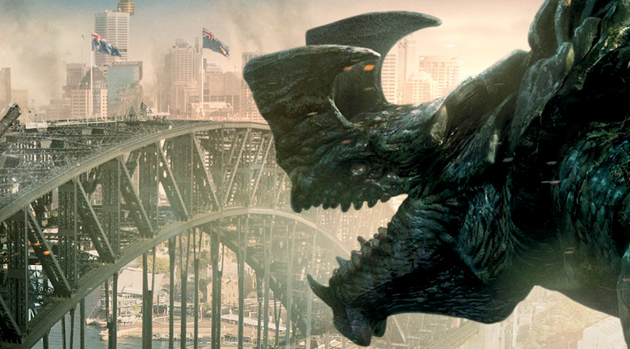There is a stillness at the center of Trey Edward Shults’ new film It Comes at Night that’s disquieting and at times completely upsetting. Shults imbues the film with this, creating a sense of dread that’s unrelenting. His characters feel it through extreme closeup as their already well regimented and very remote world seemingly closes in around them. It’s a testament to Shults as a filmmaker and also a screenwriter. He shows us all we need to know while never relenting from the dreadful paranoia encompassing his film.
The story is slight and given the 94-minute runtime that actually serves the film better. Paul (Joel Edgerton,) his wife Sarah (Carmen Ejogo) and his son Travis (Kelvin Harrison Jr.) live in a large home in the woods. Their days are spent modestly – gathering fire wood, hunting for food and rationing their meals. They do this because in their minds, the world has ended. A sickness has afflicted mankind leaving this tiny nuclear family alone and extremely cautious. So cautious that they often wear gasmasks when not in their boarded-up bungalow to resist any pathogen that may or may not be out there.
 We know the plague exists as Paul and Travis begin the film by putting Travis’ sick Grandpa in a wheelbarrow and…ahem, disposing of him. They burn the body before burying it to every possible precaution.
We know the plague exists as Paul and Travis begin the film by putting Travis’ sick Grandpa in a wheelbarrow and…ahem, disposing of him. They burn the body before burying it to every possible precaution.
Their home has one way in and out and that’s behind an ominously painted red door that leads to a room covered in sheets of plastic. One evening they are awoken by noises coming from that room. As they scramble to the door it’s busted open by a stranger. The man is Will (Christopher Abbott) – a young, handsome former construction worker who thought their home was abandoned. He’d been scavenging for food for his family. After tying Will to a tree for several days Paul is convinced by his family to listen to him and retrieve his wife Kim (Riley Keough) and son to form a stronger, more formidable group around the house.
What follows is a slow descent into madness – all through the eyes of 17-year old Travis. Travis struggles to sleep, often awoken by darkly disturbing nightmares (these allow Shults to elicit some of the film’s best scares) and whether it be foreshadowing or his burgeoning libido (Travis has a bit of a thing for Kim) the teenager can’t seem to get a full 8-hours.
What Shults finds through Travis is a perfect audience surrogate. We are taken into the intensely lonely walls of the home as he watches his Father lose what little trust he had left through tiny, simple maneuvers by Will and his family. It’s doomsday prepper paranoia in the face of an actual doomsday scenario, which makes the lack of humanity easy to relate to but even tougher to swallow.
I liked much of what Shults was exploring in It Comes at Night. He has an impeccable eye and finds some stark moments in his torture-chamber piece. What ultimately undercuts it a bit is a lack of resolution and a bit of repetitiveness. He goes to the well one too many times with the dream sequences (after the 7th slow cut to black, you sort of get the point) and can’t quite stick the landing. It’s not that the film needed to expand its reach beyond the single location but with such a convincing setup I felt it unraveled almost too quickly as if Shults was running out of film stock.
Still, It Comes at Night was an unnerving experience with masterful performances throughout. This is a doomsday film without battles or explosions but rather an indulgence in modern paranoia that hits dangerously close to home.





